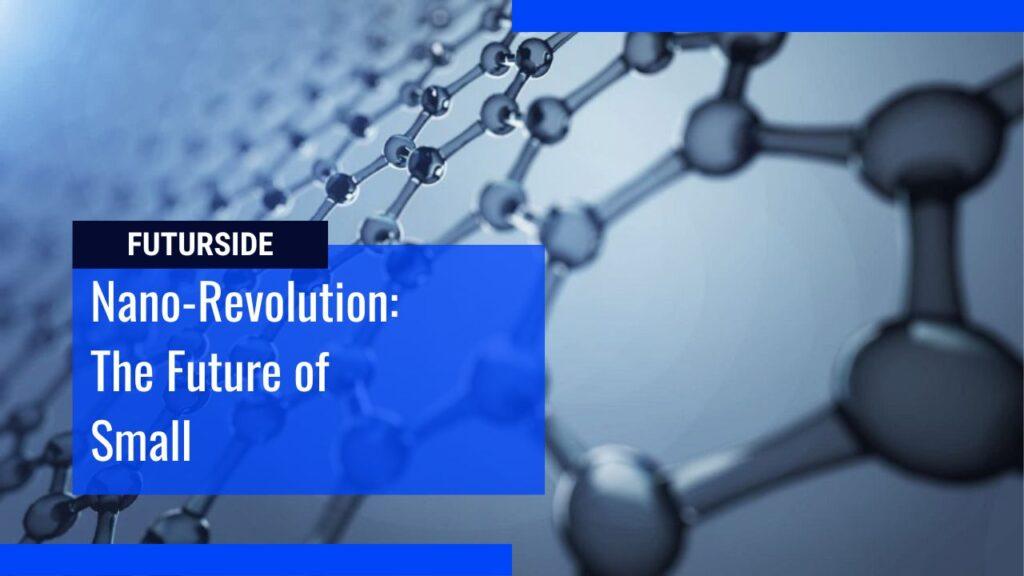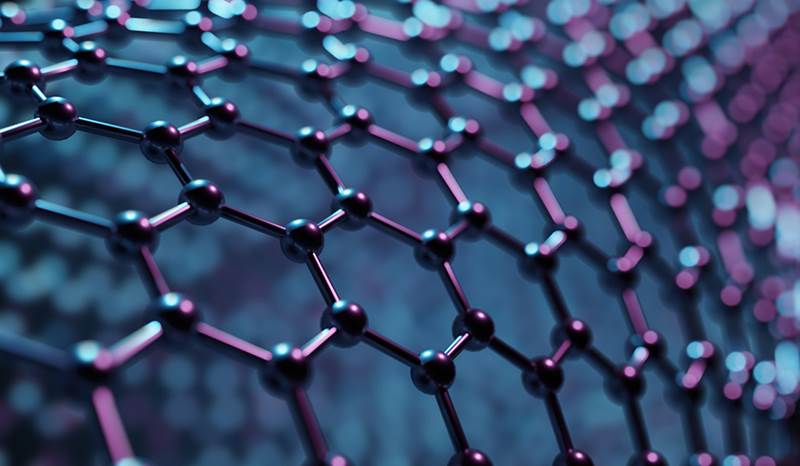We are used to being able to see and feel technology that surrounds us such as with our phones, computers and other devices. We are surrounded by a lot of stuff nowadays and each of them has some kind of purpose. It might not be obvious but each stuff that surrounds us depends on the individual atoms.
The way atoms are arranged in something determines, how strong or how weak it is. Or if it conducts electricity or if you can see through it. Or even what it feels like. In fact, pretty much anything around you does what it is supposed to do because of how all the different atoms are put together. And this includes things like breaking, smelling or running out of power.
We can make the stuff around us work better, simply by arranging the different atoms it’s made of. We can also make new stuff by putting atoms together in ways that we’ve never done before. And we can even create stuff that behaves in unusual ways. By doing so we tap into some really weird quantum physics.
But the trouble is that atoms are really small and are not that easy to work with. But over the past few years, scientists and engineers have become increasingly good at designing and engineering materials down at the level of atoms. This new technology is called nanotechnology.
It is a relatively new world beyond what the human eye can see. The microscopic world is truly fascinating and presents the potential of working at a nanoscopic level at a billion times smaller than the average scale we work with today. So what is nanotechnology? And how can something so small actually be useful?

Contents
What Is Nanotechnology?
The field of nanoscience is a rapidly-growing field, spanning many scientific disciplines. It encompasses the study of nanoscale materials and processes. It is the building block of modern technology. Nanotechnology has been defined as the science of using single nanoscale building blocks, but the term has become rather loosely used today.
Nanotechnologies can encompass any ensemble of nanoscale objects that exhibit size-dependent properties. Some research areas that fall under the umbrella of nanotech include bionanotechnology and mesoscale science. It has many different applications, including materials development and biotechnology.
The term “nanotechnology” originated in the 1960s, when Drexler, a researcher at Stanford University, first used the term to refer to a future manufacturing technology based on molecular machine systems. In his book, Engines of Creation, Drexler described the possibility of building complex machines using individual atoms. He also described the development of self-assembly nanostructures.
Even scientists of yesterday find that nanotech is a necessary part of their work. Biologists, for example, need to learn how to manipulate the smallest particles in nature to improve their work. Engineers need to study nanoscale to design materials that can withstand the force of time and natural disasters.
One area of research is mechanosynthesis, the process of building a machine by manipulating single molecules. In the 1980s, mechanosynthesis was made possible, enabling researchers to create devices on a molecular level. However, some argue that the process is impractical since it requires arranging atoms on top of one another.
Nanoparticles can also be used for environmentally friendly applications. Nanocatalysts make chemical reactions more efficient. Nanocomposites improve the efficiency of food production. They improve thermal and mechanical resistance. Nanostructures can also be used to produce superhydrophobicity, which means water droplets will roll down an inclined plane.

Why do we need nanotechnology?
Nanotechnology is the study and control of matter at a scale of one hundred nanometers or less. The process involves imaging, measuring and modeling matter at this scale. The properties of matter at this scale are remarkably diverse. The physical, chemical and biological properties of matter at this scale are incomparable to those of larger objects.
For example, it makes it possible to develop better lighting systems, stronger and lighter vehicle chassis materials and better sensors. While nanotech has been around for many years, it is only now starting to gain mainstream popularity. It has the potential to revolutionize many other industries, including medicine, energy production and even communications.
The money and research being invested in nanotech are increasing by the year. Using this new technology, scientists can build components, develop new devices and rearrange molecules that make up larger objects. Nanotechnology is used in many products, from sports equipment to metal detectors and even in communication.
It can enhance the performance of catalysts. Catalysts are chemicals used to change the energy in the substance into a harmless gas. Nanoparticles can interact with chemicals better than larger particles, making them highly effective catalysts. It can be used in many areas, from scratchproof eyeglasses to anti-graffiti coatings.
Nanotechnology can transform the way we use transportation. We can create lightweight, high-strength materials for virtually any vehicle. In fact, reducing the weight of commercial jet aircraft by 15% reduces fuel consumption. And, a study found that weight reduction can cut fuel costs by up to 63%.
The use of nanoscience can help us better protect ourselves and our environment. We can build more effective and efficient products, reduce our dependency on fossil fuels and develop better ways to fight climate change. The technology has numerous potential applications and the implications of its successful development are revolutionary.
It has also been referred to as micro-manufacturing, which is the practice of manufacturing smaller quantities of products and in custom-sized runs. It is also a promising alternative to the silicon chip.

Why nanotechnology is important?
Nanoscale materials enable washable, flexible and durable products. They reduce usury and extend the life of moving parts. Nanoparticles are being used in catalysis, which reduces the amount of catalytic material needed and decreases pollutants. Examples of large applications of nanoparticles include oil refining and automotive catalytic converters.
Nano-engineered materials are also used in everyday products such as antibacterial cleansers, water-repellent coatings and anti-fogging screens. Nanotech offers the potential to produce different products and could dramatically alter the cost and efficiency of many materials.
Nanotech could be used to make drives that hold 100 to 1000 times as much data, thin light metals with steel strength and diagnostic tests that detect life-threatening viruses in a single drop. It could also improve the way we produce food and other industrial products. It is widely used in other fields including cosmetics and textiles.
Nanomedicine is still in its R&D stage, but it promises enormous improvements in the treatment of cancer. They can deliver drugs directly to cancer cells, thereby reducing damage to healthy cells. They can even help doctors detect diseases earlier. Nanobots can be used to attack viruses and repair damaged cells.
And nanotechnology is rapidly expanding the toolkit for materials science. These nanoparticles are essentially tiny devices that can interact with large biological molecules. This technology is having a profound impact on other fields, including biology, chemistry, materials science and engineering. This makes nanotech highly advantageous for human health.
Nanoparticles enter the body through four different pathways. The ways nanoparticles can enter the body are by swallowing, absorbing through the skin, injected during a medical procedure or through implants. These particles are highly mobile within the body and can even cross the blood-brain barrier. Some of these robots are nanosized DNA fragments, which detect and destroy pathogenic RNA strands in a gene.
Benefits of nanotechnology
These developments are expected to bring dramatic changes in many fields. Nanobots can be used to clear blockages in arteries and surgical procedures can be performed much more accurately. Nanocoatings of a certain drug could delay its release, giving patients longer periods of relief.
Another benefit of nanotechnology is the ability to produce smaller, more stable particles of medication that won’t dissolve quickly. In addition, nanoparticles of iron oxide are known to bind to cancer cells, making it possible for doctors to detect cancer in its early stages. This type of precision makes cancer detection safer than ever and can even make it possible to perform a diagnosis and prescribe effective treatment. Nano solutions for aging skin could restore youth to the skin also.
The use of nanotechnology for food production has several benefits for the planet. The production of food with nanotech could reduce costs per hectare and contribute to a more sustainable food supply. Several indicators have been identified to assess the benefits of proposed strategies.
Some of these include carbon footprint, soil and water acidification, chemical pollution and insertion of harmful agents. Eventually, it could even improve the health of people in developing countries. But more research is necessary to understand the economic benefits of nanotechnology.
Nanotech is also being studied for its ability to improve energy storage devices. It is transforming the way we use energy and is expected to revolutionize the electronics industry. While it is still a relatively new field of research, it is showing great promise in almost every area of society.
Nanoparticles can be used for everything from the production of consumer goods to the remediation of waste. The increased surface area of nanoparticles allows them to travel long distances. The increase in the surface area also enables the transportation of pollutants. As a result, they are more effective than ever in combating various societal challenges.
Ultimately, they can be easily tuned and functionalized to serve as diagnostic and therapeutic agents. They can also accumulate at tumor sites and cross traditional biological barriers. With all of these advantages, nanotech can revolutionize and improve the quality of life of many people.
While nanotechnologies can improve our lives, researchers are still figuring out how to use them effectively. Researchers have been investigating microscopic entities, including bacteria, to develop new materials with improved properties. One of these applications is dentistry, where nano assemblers can destroy bacteria and repair damaged teeth.
These new materials may also help us battle bacteria. And, of course, we must build a comprehensive research facility for nanotechnologies in dentistry. Researchers have long been exploring nanotech as a new tool for engineering products. Ultimately, scientists are hoping to develop novel systems, structures and functions that are smaller and stronger than their predecessors.
Nanotechnology products will make lives easier, more comfortable and more efficient but they also carry risks that can be deadly if improperly used. The science behind nanoscale technology is constantly developing and evolving and a new understanding of this field will improve our lives. There are some challenges, but just like every technology these obstacles can be largely overcome.
With careful attention to detail, nanoparticles can help improve our lives and save countless lives. In fact, nanotech is already improving the lives of people across the world. Its use is essential for humankind as it can make a difference in the world. However, the implications of this technology are still far from clear. In the meantime, we are facing an incredibly exciting era of discovery and innovation.

0 Comments